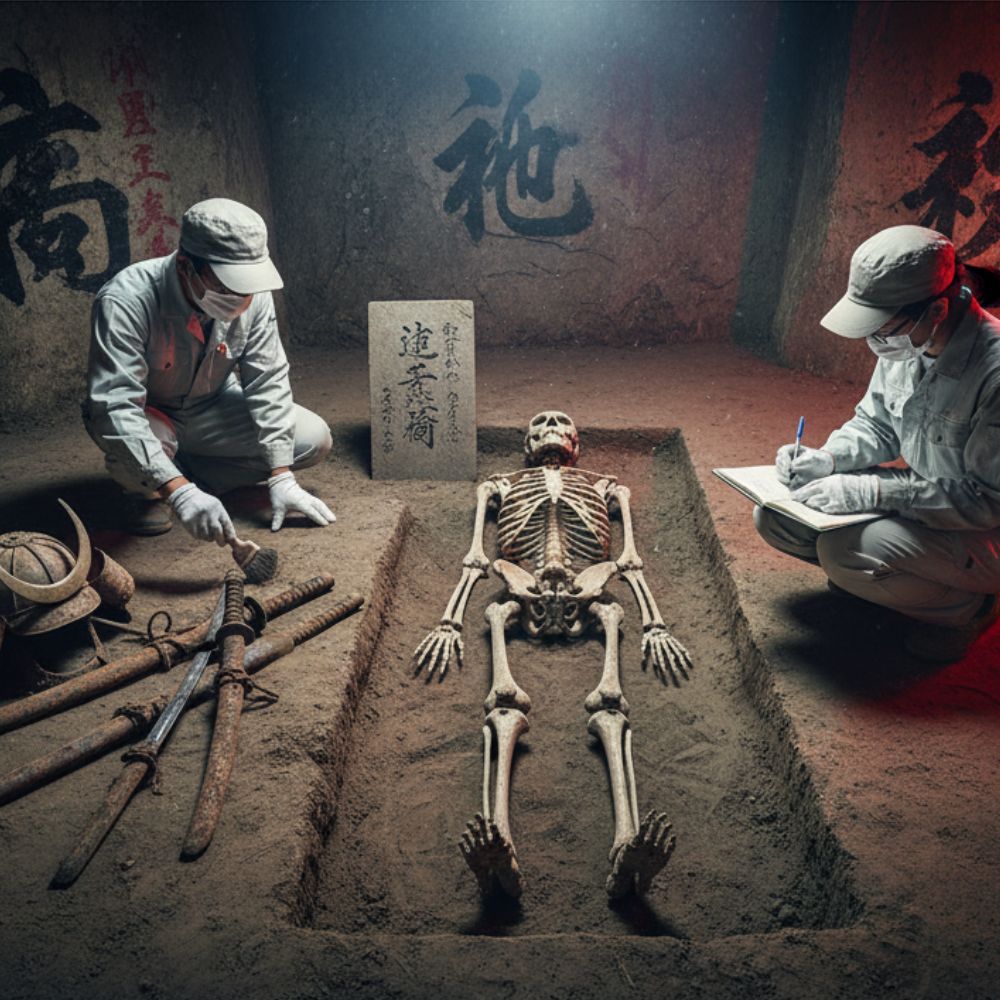Unearthing the Secrets of the Kofun Period: An Archaeological Find in Nara

The air in the chamber was thick with the scent of damp earth and ancient dust, a fragrance that always quickened Dr. Arata Tanaka’s pulse. It was late autumn, and the morning sun, though not penetrating this subterranean realm, cast long, cool shadows across the excavation site near Asuka, Nara. This was a dig unlike any other in his thirty-year career – a newly discovered kofun, a burial mound from Japan’s enigmatic Kofun period (c. 300-710 CE).
For weeks, his team had carefully peeled back layers of soil and stone, their movements precise, almost reverent. Then, yesterday, the outline had emerged: a human skeleton, remarkably intact, resting in what must have been a shallow burial pit within the larger tomb. Today was the day to document and, perhaps, to understand.
“Lighting check, Kenji,” Arata murmured, his voice hushed in the cavernous space. Kenji, his most promising protégé, adjusted the portable LED lamp, bathing the central figure in a stark, revealing glow. The bones, bleached by centuries, lay supine, a silent testament to a life lived long ago. To the skeleton’s left, a treasure trove had revealed itself: a rusted kabuto, a samurai helmet, its lacquered surface long since degraded but its form unmistakable. Beside it, two tachi—early forms of the katana—still sheathed, their iron hilts corroded but their deadly purpose evident. Other smaller, unidentifiable metal fragments lay scattered, whispering tales of forgotten craftsmanship.
“The stone tablet, sensei,” Kenji pointed with a gloved hand. Resting near the skeleton’s skull was a rectangular slab, its surface bearing faded, archaic inscriptions that Arata’s team were still painstakingly deciphering. “It looks like an epitaph, but the script is unusual for this period.”
Arata nodded, his gaze fixed on the tableau. “Indeed. It suggests a person of significant status, perhaps a regional chieftain or a formidable warrior.” He watched as Kenji meticulously brushed away fine particles of earth from the pelvis, his movements slow and deliberate. Across from them, Rieko, their lead anthropologist, sat hunched, her notebook open, pen poised. She was sketching every detail, noting the position of each bone, the angle of the artifacts. Her work was crucial, the forensic bedrock upon which their theories would be built.
The chamber itself was simple yet imposing. Rough-hewn stone walls surrounded them, bearing faint traces of red pigment in places. On the back wall, bold, archaic characters, seemingly painted with a broad brush, hinted at religious or ancestral significance. A dramatic red light from a secondary lamp in a far corner cast an eerie, almost sacred glow on that section of the wall, deepening the sense of mystery.
Arata closed his eyes for a moment, imagining. Who was this person? What battles did they fight? What stories did these silent artifacts hold? The Kofun period was a formative era for Japan, a time of emerging centralized power, fierce clan rivalries, and the slow dawn of imperial rule. Every fragment, every inscription, every bone held a piece of that puzzle.
“Continue with the mapping,” Arata instructed, his voice regaining its professional crispness. “Rieko, pay close attention to the skeletal structure for any signs of trauma. Kenji, photograph everything from every angle. We have a rare opportunity here, a direct window into the life of a powerful individual from a truly pivotal moment in Japanese history.”
As the quiet work resumed, the cool air of the tomb seemed to carry echoes of a distant past. This wasn’t just dirt and bones; it was a conversation spanning centuries, a story waiting patiently to be told, painstakingly unearthed here, in the ancient heartland of Nara. Each brushstroke, each recorded note, was a whisper to the past, bringing its secrets into the light.
